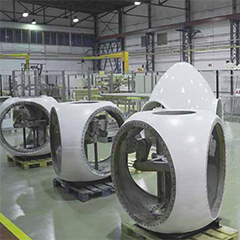While fresh-out-of-the-box wind turbines have their place in the wind power mix, there’s also (a growing) demand for reinvigorated assets of a certain age. We explore the re-engineering market.
As the wind energy market has matured, assets are ageing and many turbines are passing the end of their warranty period. At the same time, operators in advanced markets like Denmark and Germany are moving towards more powerful and sophisticated equipment rated at two megawatts (MW) and upwards.
The result is that there are few turbines on offer at 1.5 megawatts and below. Plus, as the market has matured, larger manufacturers have acquired their smaller competitors and streamlined their offer, meaning that turbine models made by OEMs that have since been acquired are no longer actively supported.
Turbine technology itself has also moved on. Early turbines were two-speed models, with low speed and high speed options for different wind conditions. Today’s turbines are fitted with power electronics and variable speed mechanisms that ramp up production as the wind blows. These enable operators to maximize production throughout the range of light, medium and strong winds.
Together these factors have led to a new market for refurbishment of turbines that are out of warranty, either for operators who want to improve performance or for a growing second hand market for wind turbines.
This market is actually substantial. I estimate that there are more than 30,000 old-style turbines in the world today that don’t have power electronics. And their warranty periods have either ended already or are close to expiring.
Operators therefore face a range of possibilities. They can choose to extend their warranties, refurbish turbines on-site or they can replace them with the latest technology. If they opt for replacement they can offset the cost by selling their aging turbines on what is now a fast-emerging second hand market.


























